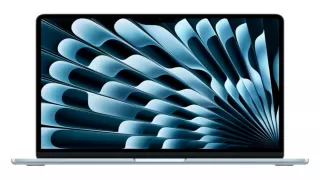When a company known for redefining PC gaming hardware and platforms announces three new devices at once, you stop and pay attention. That’s exactly what Valve Corporation has done with its latest hardware trio: the Steam Machine (mini-console / living-room PC), the Steam Frame (next-gen VR headset), and the Steam Controller (new controller altogether).
Coming at the start of 2026 (early 2026), these devices mark Valve’s ambitious attempt at bridging PC games, living-room consoles, and immersive VR, all under the Steam ecosystem. In this article, I’ll unpack what we know, what we don’t yet know, and what this could mean, with a focus on specs, pricing chatter, ecosystem implications, and what gamers should watch out for.
As a long-time hardware watcher (two decades of scribbling about gadgets and gaming gear), here’s why I’m excited:
- Valve is taking the PC ecosystem, traditionally desktop-bound, and pushing it into more living‑room and VR experiences. That blur between PC gaming, console simplicity, and VR immersion is rich ground.
- The Steam Machine is positioned not just as a console, but as a PC in the living room, which may appeal to gamers who hate console lock‑in but want lean‑back simplicity.
- The Steam Frame looks like Valve’s serious re‑entry into stand‑alone or hybrid VR (not just tethered to a high‑end PC) with streaming first and local play second.
- The controller matters: input is often the weak link in PC‑to‑console conversions and VR. A well‑designed controller could be the difference-maker.
Steam Machine Specifications
Two storage variants: 512 GB and 2 TB
CPU: semi‑custom AMD Zen 4 (6 cores, 12 threads, up to ~4.8 GHz) + GPU: AMD RDNA 3 architecture (28 Compute Units) for 4K gaming at 60fps with FSR (upscaling) and ray tracing support.
RAM: 16 GB DDR5 + 8 GB GDDR6 VRAM. Storage: SSD + microSD expansion. I/O: 1 Gbps Ethernet, Wi‑Fi 6E, DisplayPort, HDMI, multiple USB ports. Runs on SteamOS.
Compact form‑factor (about six inches tall). Valve says it will be over six times more powerful than the Steam Deck.
Bundles: It will ship bundled with the new Steam Controller, and also be available standalone.
Steam Frame VR Headset Specs
Standalone capability + PC‑streaming: uses a 6 GHz wireless streaming adapter to stream games from a PC or run less graphics‑intensive ones natively.
Display: Dual panels (2160×2160 per eye) with pancake optics and refresh rates up to ~72-144 Hz.
Tracking: Inside‑out via outward‑facing monochrome cameras + eye‑tracking for foveated streaming (which lowers peripheral resolution to save bandwidth).
Modular headstrap, dual audio drivers per ear (for vibration cancellation to improve tracking).
Running SteamOS, and able to treat VR or flat games via streaming or natively.
Steam Controller Features
Hybrid design: It includes two large trackpads (similar in spirit to the original Steam Controller), analogue sticks, grip‑sense (detects when you grip to disable gyro), and TMR magnetic thumbsticks for better durability & precision.
Includes IR LEDs so the Steam Frame can track it (useful in VR or mixed setups). Works across the Steam ecosystem (PC, handhelds, streaming).
Unanswered Questions
- Exact pricing: Valve has not published official launch prices for any of these three devices yet.
- Precise release window beyond early 2026.
- Worldwide availability & regional pricing (especially important for India and other emerging markets).
- Software library/bundles: Which games will be Steam Machine Verified or Steam Frame Verified? Which games will show optimised performance? The success of hardware depends on software support.
- Power‑consumption, thermals, real‑world 4K/60fps performance: While specs sound great, real‑world results can vary.
- Controller ecosystem and accessory support: How well will third‑party developers support the new controller, or how many games will fully exploit the trackpads, grips, etc.
Expected Price Range
Various gaming forums and media outlets are estimating:
- The VR headset (Steam Frame) may end up around US $1,000 or slightly below, given the high specs.
- The Steam Machine is estimated at around US $800‑1,000, depending on storage (512 GB vs 2 TB) and bundle with controller.
- For India and other markets, expect higher local pricing due to import duties, taxes, and currency exchange, so plan accordingly if you’re watching from Madhya Pradesh.
Why It Could Change Gaming?
Pros
- If Valve nails the cross‑device streaming (PC → living room, PC → VR headset) with low latency and high quality, they bridge a major gap.
- For gamers wanting PC‑level games on TV (without full gaming‑PC bulk), the Steam Machine is appealing.
- For VR fans, a standalone headset with strong streaming and high specs (Steam Frame) could be a sweet spot between budget mobile VR and ultra‑expensive tethered setups.
- Ecosystem integration (Steam library, cross‑save, familiar UI) gives them an advantage.
Cons
- Price vs value: If pricing is too high, gamers may prefer current consoles (PlayStation, Xbox) or more mature VR sets.
- Software/optimisation: High specs mean little if games aren’t optimised or verified for the hardware.
- Competition: Console/PC/VR markets are highly competitive; Valve must deliver strong differentiators.
- Market fragmentation: Multiple devices (machine, controller, headset) means consumers might wait for reviews or bundles, potentially delaying uptake.
Key Things to Watch
- Launch price announcements - especially for the Indian market.
- Benchmark reviews - how the Steam Machine handles real games at 4K/60fps, how the Steam Frame performs streaming vs native.
- Software verification program roll‑out - how many games qualify, what Steam Verified means per device.
- Controller ecosystem & game support - Are major titles using the new trackpads/grip sense/gyro features?
- Accessory/upgrade support - Modular strap on the Steam Frame, expansion ports, future‑proofing.
- Regional availability - whether India gets it at launch, import issues, warranty support.
For a content creator, tech writer, or gamer, this announcement is a rich topic. It has fresh hardware, strong brand recognition, community anticipation, and plenty of speculation, all ingredients for engaging, rankable content.
Valve is staking big on the idea that PC gaming doesn’t have to stay locked to the desk. With the Steam Machine, the living room becomes harnessed. With the Steam Frame, VR becomes less tethered and perhaps more mainstream. And the Steam Controller aims to bind it all together.
As we approach the early 2026 launch, staying sharp on price, reviews, availability, and ecosystem health will tell whether this gamble pays off, or whether the hardware remains niche.
Also Read: Top 5 Gaming Phones Under Rs 30,000 in India 2025




























